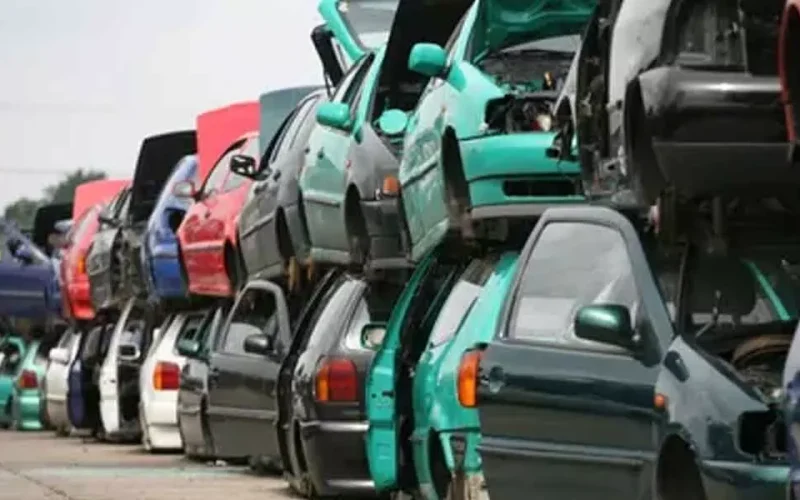When you drive past a scrapyard in Singapore’s industrial districts, you’re witnessing more than just piles of discarded metal—you’re seeing the physical manifestation of economic inequality and environmental necessity colliding in ways that reveal profound truths about how our society functions. These facilities, often hidden from view behind corrugated fencing and concrete barriers, represent both the endpoint of consumer dreams and the beginning of survival strategies for those who work within Singapore’s recycling economy.
The Geography of Necessity
Singapore’s metal recycling facilities are strategically located in the city-state’s industrial heartlands, places where land costs remain relatively affordable and heavy machinery can operate without disturbing residential areas. But this geographical separation masks a deeper social reality: the people who work in these facilities often live far from their workplaces, commuting daily from public housing estates to jobs that keep Singapore’s circular economy functioning.
The numbers tell a compelling story. Singapore processes approximately 2.8 million tonnes of scrap metal annually, according to recent industry data. This represents not just environmental responsibility, but economic opportunity for thousands of workers who depend on the salvage industry for their livelihoods. Yet these workers remain largely invisible to the general public, their labour essential but unrecognised.
The Workers Who Make It Possible
Inside Singapore’s automotive salvage yards, skilled workers perform complex tasks that require years of experience to master. These are not unskilled labourers, despite how society often categorises them. They are specialists who can identify valuable components at a glance, understand the intricate relationships between different metals, and operate dangerous machinery with precision born of necessity.
The work is demanding and often dangerous:
- Physical Labour: Lifting heavy components, often in Singapore’s oppressive heat
- Technical Knowledge: Understanding automotive systems, electronics, and metallurgy
- Safety Awareness: Working with hazardous materials and industrial equipment
- Market Understanding: Knowing current metal prices and component values
Many of these workers are foreign nationals, part of Singapore’s essential but precarious migrant labour force. They earn wages that allow them to support families back home whilst contributing to Singapore’s environmental goals, yet they exist in a legal and social limbo that offers little security or recognition.
The Economics of Discarded Dreams
Vehicle breaking yards in Singapore serve as repositories for middle-class aspirations that have reached their endpoint. Each car that arrives represents someone’s investment in mobility, status, and independence. The average Certificate of Entitlement for a car in Singapore costs upwards of S$100,000, making vehicle ownership a significant financial commitment that eventually becomes someone else’s livelihood.
The transformation from asset to income source illustrates Singapore’s economic stratification. Wealthy car owners dispose of vehicles that working-class dismantlers then process for parts that lower-income families purchase to maintain their older vehicles. This cycle creates a complex web of economic relationships that spans social classes whilst remaining largely invisible to policy makers and the general public.

Environmental Justice in Action
Singapore’s commitment to recycling 95% of end-of-life vehicles through proper dismantling represents impressive environmental stewardship. The National Environment Agency’s regulations ensure that hazardous materials are handled safely and that valuable resources are recovered efficiently. Yet the environmental benefits of this system depend entirely on workers who face daily exposure to industrial chemicals, metal dust, and physical hazards.
The environmental justice implications are clear:
- Unequal Risk: Workers bear health risks whilst society receives environmental benefits
- Spatial Segregation: Facilities located away from affluent areas
- Regulatory Gaps: Strong environmental standards, weaker worker protection
- Economic Dependency: Communities rely on industries that may harm their health
The Hidden Support System
Auto wrecking operations function as an informal social safety net for Singapore’s working class. When a family’s car breaks down and they cannot afford new parts, these facilities provide affordable alternatives that keep vehicles operational. A replacement engine that might cost S$8,000 new becomes available for S$2,000 used, making the difference between mobility and immobility for working families.
This economic function extends beyond individual transactions. Metal recycling facilities provide employment for workers who might otherwise struggle to find formal sector jobs. They offer apprenticeships and skills development opportunities that exist outside Singapore’s formal education system. They create economic value from waste streams that would otherwise require expensive disposal.
The Policy Blind Spot
Singapore’s urban planning excellence has created a modern miracle of efficiency and livability, yet scrap metal facilities remain largely invisible in policy discussions. The Land Transport Authority’s de-registration system efficiently processes end-of-life vehicles, but little attention is paid to the working conditions or economic circumstances of those who actually perform the dismantling work.
This oversight reflects broader patterns in how Singapore approaches inequality. Environmental policies focus on outcomes rather than process, measuring success through recycling rates rather than worker welfare. Economic policies celebrate entrepreneurship and innovation whilst ignoring the informal economy that makes formal systems possible.
The Future of Necessary Work
Singapore’s transition to electric vehicles by 2040 will fundamentally alter the landscape of automotive recycling. Electric vehicles contain valuable materials like lithium, cobalt, and rare earth elements, but they also require new skills and safety protocols for safe dismantling. The workers who currently process internal combustion engines will need retraining and support to adapt to these changes.
The question is whether Singapore will seize this transition as an opportunity to improve conditions for recycling workers or continue to treat them as an invisible necessity. The answer will reveal much about the city-state’s commitment to inclusive development and environmental justice.
Recognition and Responsibility
The next time you see a scrapyard in Singapore, remember that you’re looking at more than discarded metal—you’re seeing the physical manifestation of economic relationships that keep our society functioning, performed by workers whose labour remains essential but unrecognised in our conversations about sustainability and prosperity.

